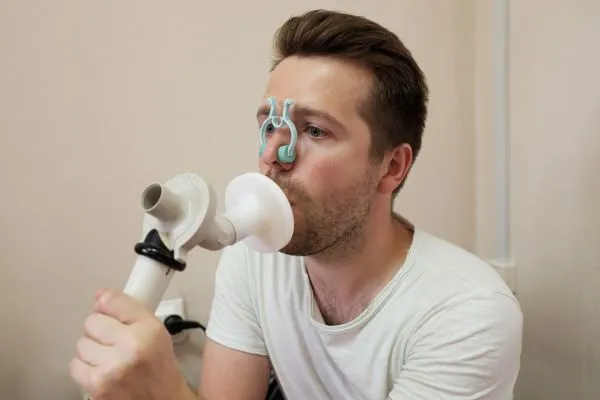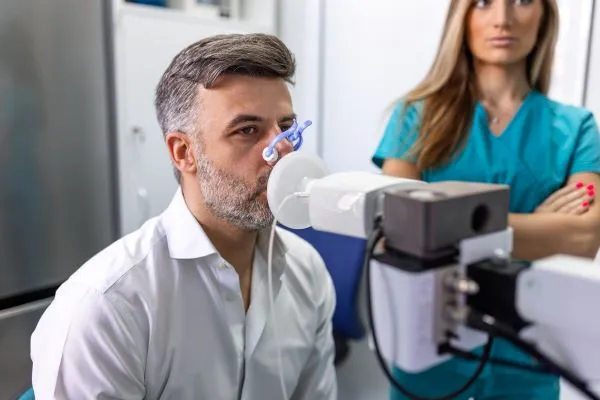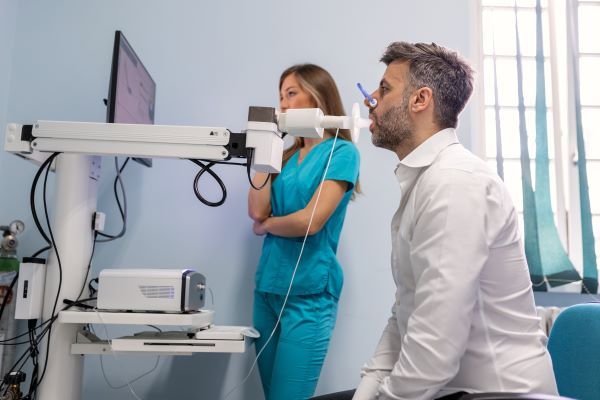Know When to Report Spirometry Components Separately
Hint: NCCI PTP edit pairs holds the key. Spirometry is an essential service for assessing a patient’s pulmonary function. The pulmonary function test (PFT) is made up of several components, each of which has its own procedure code in the CPT® code set. Read on to find out if you can ever report the services on their own. Learn What Makes up a Spirometry Procedure Pulmonologists use spirometry to measure the amount of air the patient breathes in and out. The pulmonary function test (PFT) is also used to assess how quickly and easily the patient can blow the air out of the lungs. The test is useful in diagnosing respiratory conditions, such as asthma or chronic obstructive pulmonary disease (COPD), as well as assessing the patient’s lung function prior to an operation. You’ll typically assign one of the following codes for a spirometry test, depending on bronchodilator use: “Spirometry measures expiratory airflow and volumes, and is the basis of most other pulmonary function tests. Therefore, measurement of vital capacity is a component of spirometry, as is flow-volume loop measurement,” says Melanie Witt, RN, MA, an independent coding consultant and AAPC Consulting Editor from Guadalupita, New Mexico. A spirometry exam quantifies forced vital capacity (FVC) and forced expiratory volume (FEV1). FVC is the maximum air amount the patient can exhale after taking a deep breath. FEV1 measures how much air is exhaled in one second. You’ll assign only the spirometry code (e.g., 94010 or 94060) rather than the three individual codes for vital capacity, breathing capacity, and flow volume loop (FVL). However, each of these component services have their own codes, which break down as follows. Get to Know the Lungs’ Vital Capacity Vital capacity gauges the lung’s volume, and it’s a basic measurement of spirometry. The component measures the air volume while the patient slowly exhales after taking as deep a breath as possible. Several factors, including age, sex, and height, determine a normal range for the results. You’ll report total vital capacity with 94150 (Vital capacity, total (separate procedure)). However, the pulmonologist typically performs this service as part of a larger procedure like spirometry, so you’ll report just the appropriate spirometry code. Assess How Much Air Moves in 15 Seconds The provider performs maximal voluntary ventilation or maximum breathing capacity to assess how much air the patient can breathe in and breathe out as possible in a short timeframe. The physician places a nose clip on the patient and the patient places the spirometer mouthpiece in their mouth. After breathing normally, the provider instructs the patient to inhale and exhale as quickly as possible for five breaths or fewer. The goal is to evaluate how much air is moved in 12 to 15 seconds. You’ll assign 94200 (Maximum breathing capacity, maximal voluntary ventilation) when the test is performed as a separate procedure. Much like total vital capacity, 94200 is a portion of the 94010 and 94060 spirometry codes. Evaluate a Cycle’s Worth of Airflow With FVL, the provider assesses the patient’s airflow rate during an entire respiratory cycle. The physician then graphs the information on a plotted curve to analyze the pulmonary function. The FVL test involves forced inhalation followed by forced exhalation. Also, the test is performed without a bronchodilator and includes the spirometry needed for the procedure. You’ll assign 94375 (Respiratory flow volume loop) to report FVL testing as a standalone procedure. Similarly, 94375 is inherently included in 94010 and 94060, so most payers won’t pay for the service when it’s reported with a full spirometry test. Does the NCCI Allow You to Report the Separate Procedures? Medicare’s National Correct Coding Initiative (NCCI) Procedure-to-Procedure (PTP) edit pairs have very defined rules about reporting the individual component codes with the spirometry procedures. As mentioned above, you’ll only assign 94010 or 94060 if the provider documentation lists spirometry, vital capacity, breathing capacity, and flow volume, instead of the three separate codes. You’ll also notice in the CPT® code set that 94150, 94200, and 94375 have parenthetical notes instructing you to not report the codes with 94010 or 94060. But if the provider performs 94200 or 94375 without any other spirometric components, you should report the appropriate service code. NCCI PTP edit pairs have two modifier indicator options, “0” and “1,” which tell you whether you can unbundle the paired codes. A “0” modifier indicator means Medicare doesn’t allow you to override the edit and unbundle the pair, but a “1” modifier indicator allows you to unbundle the codes and report them separately with an appropriate modifier. Edit pairs 94010/94375 and 94060/94375 feature the “0” modifier indicator, and the pairs can never be unbundled. Edit pairs 94010/94200, 94060/94200, 94010/94150, and 94060/94150 have a “1” modifier indicator. If the medical record has supporting documentation, you may unbundle these pairs where it’s appropriate. At the same time, you’ll also need to pay attention to the code status when dealing with bundling issues. For example, 94150 has a “Bundled” status on the Medicare Physician Fee Schedule (MPFS). Code 94150 also features a Medically Unlikely Edit (MUE) of “0” for practitioners. This ensures that a claim involving 94150 will not be paid regardless of it being reported by itself or with any other service.






